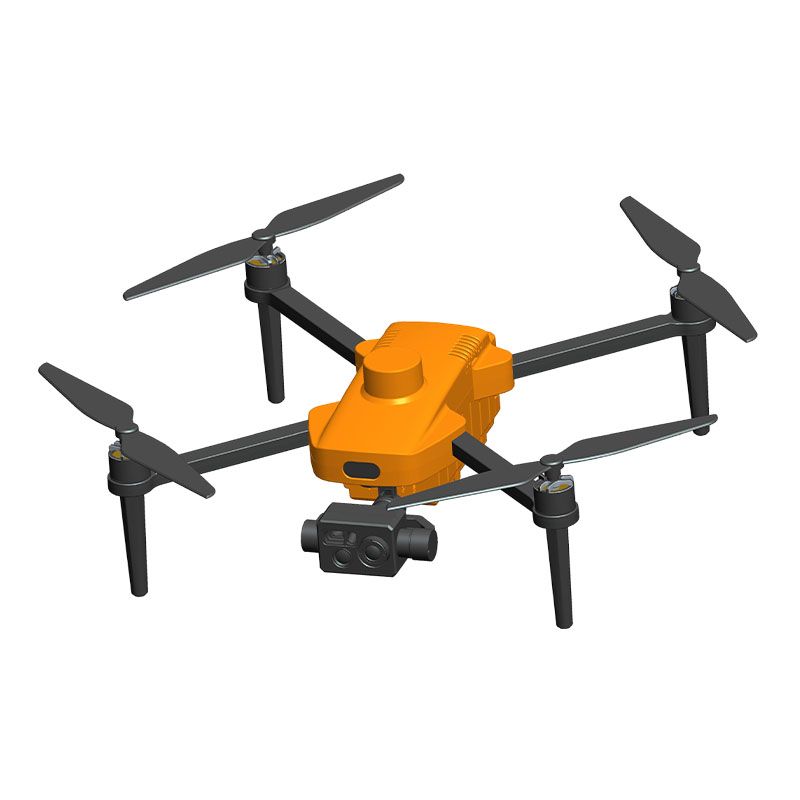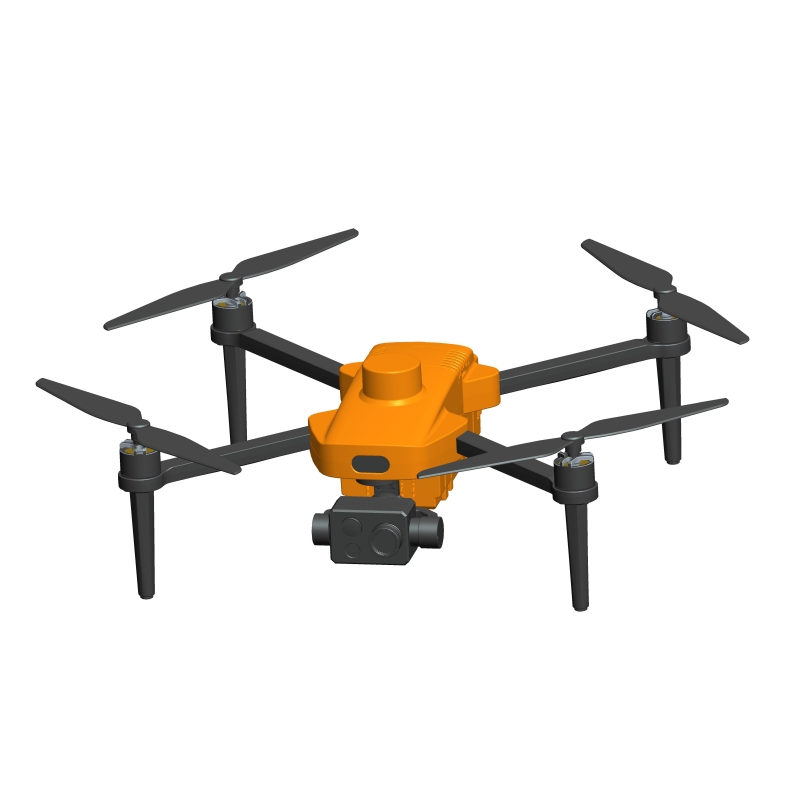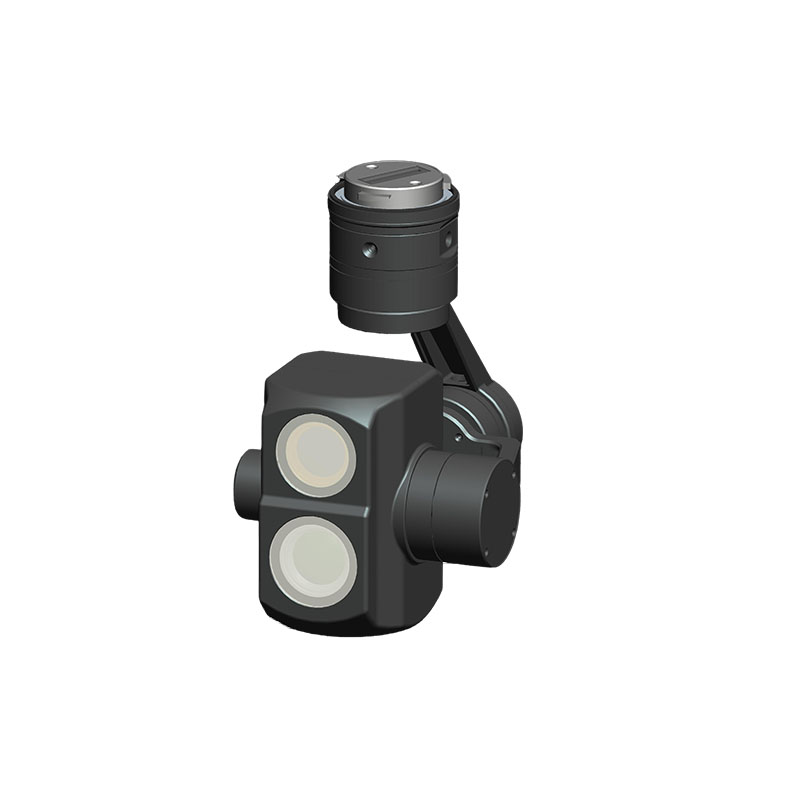Three-color light inspection quadcopter UAVs enable precise and efficient inspections
Release Time : 2025-10-27
In the operation and maintenance of critical infrastructure such as electricity, energy, transportation, and water conservancy, traditional manual inspection methods face challenges such as low efficiency, high risk, and incomplete coverage. With the rapid development of drone technology, quadcopters, with their flexible takeoff and landing, stable hovering, and high maneuverability, have become a crucial tool for intelligent inspections. Three-color light inspection quadcopter UAVs are setting a new benchmark in the industry. They not only offer basic functions such as high-definition video, autonomous flight, and remote control, but also integrate an intelligent three-color light system, enabling innovative applications such as operational status visualization, enhanced nighttime inspections, and on-site alert linkage, comprehensively improving the accuracy and efficiency of inspections.
1. Three-color Light System: The Visual Signal Center That Makes Drones "Talk"
The so-called "three-color light" refers to the high-brightness red, yellow, and green LED indicator lights integrated into the drone's fuselage. Its functions extend far beyond illumination or decoration. Essentially, it provides real-time status feedback and environmental interaction. Through preset logic or remote commands, the tri-color light dynamically switches colors and flashing patterns, intuitively reflecting the drone's flight status: green indicates normal takeoff and cruising, yellow indicates low battery or weak signal, and red warns of a malfunction, loss of control, or emergency landing. In complex electromagnetic environments or long-distance flight, ground operators can quickly determine the drone's status based solely on the light, eliminating the need for on-screen data. This significantly improves emergency response speed and operational safety.
2. Enabling Nighttime Inspections, Overcoming Time and Light Constraints
During inspections of facilities such as power lines, wind turbines, and oil pipelines, many critical issues are more apparent at night or in low-light conditions. Traditional drones struggle to conduct effective nighttime operations due to insufficient lighting. The tri-color light system, combined with the main camera's night vision capabilities, provides directional fill light and wide-area illumination, enabling drones to clearly capture equipment details. More importantly, the high-brightness white light mode of the tri-color light can serve as a powerful searchlight, precisely illuminating key areas such as towers, insulators, and joints. This assists the infrared thermal imager in identifying abnormal temperature rises, enabling precise dual-mode diagnosis using both visible light and thermal imaging. This truly breaks down time barriers and enables all-weather inspections.
3. Improving Operational Safety and Building an On-Site Warning Barrier
Inspection operations are often conducted in high-risk areas such as those at high voltage, at high altitude, and in densely populated areas. Drone flights can pose a potential threat to nearby personnel. The tri-color light system plays a crucial role in these situations. When approaching substations, railway lines, or over cities, the drone can flash a red light to simulate an alarm signal, alerting ground personnel to clear the area. When inspecting hazardous areas, a steady yellow light illuminates, signaling "Operation in Progress, Keep Out of the Way." This active optical warning signal effectively reduces the risk of flight accidents and improves public safety, making it particularly suitable for complex scenarios such as urban power grids, bridges, and tunnels.
4. Intelligent Linkage: Enables Multi-Drone Collaboration and Automated Inspections
The modern tri-color light system is deeply integrated with the drone's flight control, navigation, and AI recognition modules. When a drone identifies a defect using its AI algorithm, it automatically triggers a specific flashing pattern of its three-color light, marking the fault location and facilitating subsequent manual review or report generation. During multi-drone collaborative inspection missions, different drones can be identified by their three-color light patterns, enabling state synchronization and obstacle avoidance during formation flight, significantly improving group efficiency.
5. Lightweight Integration: Improving Performance Without Adding Weight
Despite its powerful functionality, the three-color light system typically utilizes ultra-low-power LEDs and lightweight materials, adding less than 20 grams to the overall weight and minimally impacting the quadcopter's flight range. Furthermore, it draws power directly from the drone's main battery, eliminating the need for an external power source. This highly integrated design allows for simplified maintenance. This "small device, big impact" design perfectly meets the stringent performance and reliability requirements of industrial drones.
The three-color light inspection quadcopter UAV is more than just a technological advancement; it embodies intelligent operations and maintenance. It integrates the "visible" language of light into the "invisible" data stream, evolving the drone from a "flying camera" to an "intelligent sensing terminal." In the alternation of red, yellow and green light and shadow, inspection operations become more precise, safe and efficient.
1. Three-color Light System: The Visual Signal Center That Makes Drones "Talk"
The so-called "three-color light" refers to the high-brightness red, yellow, and green LED indicator lights integrated into the drone's fuselage. Its functions extend far beyond illumination or decoration. Essentially, it provides real-time status feedback and environmental interaction. Through preset logic or remote commands, the tri-color light dynamically switches colors and flashing patterns, intuitively reflecting the drone's flight status: green indicates normal takeoff and cruising, yellow indicates low battery or weak signal, and red warns of a malfunction, loss of control, or emergency landing. In complex electromagnetic environments or long-distance flight, ground operators can quickly determine the drone's status based solely on the light, eliminating the need for on-screen data. This significantly improves emergency response speed and operational safety.
2. Enabling Nighttime Inspections, Overcoming Time and Light Constraints
During inspections of facilities such as power lines, wind turbines, and oil pipelines, many critical issues are more apparent at night or in low-light conditions. Traditional drones struggle to conduct effective nighttime operations due to insufficient lighting. The tri-color light system, combined with the main camera's night vision capabilities, provides directional fill light and wide-area illumination, enabling drones to clearly capture equipment details. More importantly, the high-brightness white light mode of the tri-color light can serve as a powerful searchlight, precisely illuminating key areas such as towers, insulators, and joints. This assists the infrared thermal imager in identifying abnormal temperature rises, enabling precise dual-mode diagnosis using both visible light and thermal imaging. This truly breaks down time barriers and enables all-weather inspections.
3. Improving Operational Safety and Building an On-Site Warning Barrier
Inspection operations are often conducted in high-risk areas such as those at high voltage, at high altitude, and in densely populated areas. Drone flights can pose a potential threat to nearby personnel. The tri-color light system plays a crucial role in these situations. When approaching substations, railway lines, or over cities, the drone can flash a red light to simulate an alarm signal, alerting ground personnel to clear the area. When inspecting hazardous areas, a steady yellow light illuminates, signaling "Operation in Progress, Keep Out of the Way." This active optical warning signal effectively reduces the risk of flight accidents and improves public safety, making it particularly suitable for complex scenarios such as urban power grids, bridges, and tunnels.
4. Intelligent Linkage: Enables Multi-Drone Collaboration and Automated Inspections
The modern tri-color light system is deeply integrated with the drone's flight control, navigation, and AI recognition modules. When a drone identifies a defect using its AI algorithm, it automatically triggers a specific flashing pattern of its three-color light, marking the fault location and facilitating subsequent manual review or report generation. During multi-drone collaborative inspection missions, different drones can be identified by their three-color light patterns, enabling state synchronization and obstacle avoidance during formation flight, significantly improving group efficiency.
5. Lightweight Integration: Improving Performance Without Adding Weight
Despite its powerful functionality, the three-color light system typically utilizes ultra-low-power LEDs and lightweight materials, adding less than 20 grams to the overall weight and minimally impacting the quadcopter's flight range. Furthermore, it draws power directly from the drone's main battery, eliminating the need for an external power source. This highly integrated design allows for simplified maintenance. This "small device, big impact" design perfectly meets the stringent performance and reliability requirements of industrial drones.
The three-color light inspection quadcopter UAV is more than just a technological advancement; it embodies intelligent operations and maintenance. It integrates the "visible" language of light into the "invisible" data stream, evolving the drone from a "flying camera" to an "intelligent sensing terminal." In the alternation of red, yellow and green light and shadow, inspection operations become more precise, safe and efficient.







